Table of Contents
Volcanic Eruption is the eruption of molten rock (magma) onto the surface of the earth. A volcano is a way through which magma and gases come out. The Magma that gets to the surface is known as lava.
volcanos are one option to release heat. The pattern of issuing of volcanos on Earth provides us with the idea that Earth’s outer surface is split into plates; the chains of volcanos related to mid-ocean ridges and subduction zones denote the plate edges.
Other planets have volcanic features some recently active telling geologists that they, too, are losing heat from their interiors and that there is circulation.
A. Dangerous Volcanic Eruptions in History
The list of the 10 most dangerous volcanic eruptions in history is prepared depending on the magnitude and destruction made by the volcano. The top 10 dangerous volcanic eruptions in history are as follows:
10. Santa Maria, Guatemala, (VEI6)
Santa María Volcano is the biggest active volcano in the western highlands of Guatemala, in the Quetzaltenango Department close to the city of Quetzaltenango. The volcano is also famous with the name of Gagxanul in the local K’iche’ language as a “Naked Volcano or Mountain”, before the 16th-century Spanish conquering of the area.
The VEI-6 explosion of Santa María Volcano in 1902 was one of the biggest eruptions of the 20th century, after the 1912 Novarupta and 1991 Mount Pinatubo explosion. It is the five largest explosions of the past 200 years.
| Year | October 25, 1902 |
| Death | 5,000 |
| Damage Cost | $1-5 million |
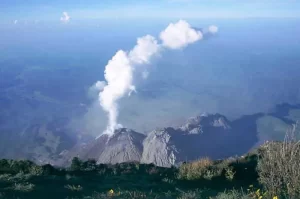
9. Mt Vesuvius, Italy, 79 AD (VEI5)
Different explosions of Mount Vesuvius were recorded but a major stratovolcano in southern Italy, the destructive one in 79 AD, was one of the deadliest in European history. It has been remembered as the most well-known volcanic explosion in past.
In the autumn of 79 AD, Mount Vesuvius destructively discharged out a deadly cloud of super-heated tephra and gases up to a height of 33 km (21 mi), emitting molten rock, pulverized pumice, and hot ash at 1.5 million tons per second, eventually emitting 100,000 times the thermal energy of the atomic bombings of Hiroshima and Nagasaki.
The event is known as the Vesuvian type of volcanic explosion, characterized by explosion columns of hot gases and ash blowing into the stratosphere, although the event also contains pyroclastic flows related to the Pelean explosion.
| Year | August 24, 79 CE |
| Death | Possibly up to 16,000 |
| Damage Cost | $1.8 billion in Repair |

8. Mount Pinatubo, Philippines, 1991 (VEI6)
The 1991 explosion of Mount Pinatubo in the Philippines’ Luzon Volcanic Arc was the second biggest volcanic explosion of the 20th century, beyond only the 1912 explosion of Novarupta in Alaska.
The explosion started on April 2 as a sequence of the phreatic eruptions from a crack that opened on the north side of Mount Pinatubo. Seismographs were kept and started watching the volcano for earthquakes.
In late May, the many seismic events under the volcano vary from day to day. Starting June 6, a swarm of increasingly shallower earthquakes was completed by inflationary tilt on the upper east flank of the mountain peak in the expulsion of a minor lava dome.
| Year | June 15, 1991 |
| Death | 350 |
| Damage Cost | $700 million |
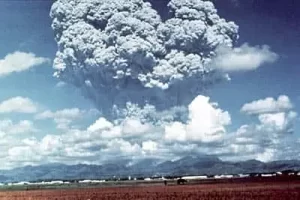
7. Nevado del Ruiz, Columbia, 1985 (VEI3)
At 3:06 pm, on the date of November 13, 1985, Nevado del Ruiz start to explode, emitting dacitic tephra more than 30 kilometers (19 mi) in the atmosphere. The total mass of the exploded material (containing magma) was 35 million tonnes only 3% of the quantity that exploded from Mount St. Helens in 1980. The explosion gained data of 3 on the Volcanic Explosivity Index.
The mass of the emitted sulfur dioxide was about 700,000 tonnes, or about 2% of the mass of the exploded solid material, resulting in the explosion a typically sulfur-rich.
| Year | November 13, 1985 |
| Death | 25,000 |
| Damage Cost | 1 billion dollars |

6. Mt Unzen, Japan, 1792 (VEI2)
At the end of 1791, a sequence of earthquakes happened on the western flank of Mount Unzen which slightly displace Fugen-dake (one of Mount Unzen’s peaks).
In February 1792, Fugen-dake begin to erupt, activating a lava flow that had gone for two months. Meanwhile, the earthquakes carry on shifting close to the city of Shimabara.
On the date of 21 May at night time, two biggest earthquakes were observed by a failure of the eastern flank of Mount Unzen’s Mayuyama dome, resulting in a landslide that clean through the city of Shimabara and into Ariake Bay, activating a big tsunami.
| Year | May 21, 1792 |
| Death | 43 |
| Damage Cost | US$2 billion |
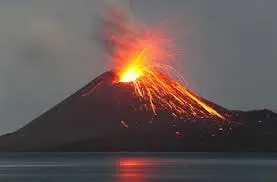
5. Ilopango, El Salvador, 450AD (VEI6+)
The Tierra Blanca Joven explosion of Lake Ilopango was the biggest volcanic eruption in El Salvador at historic times getting a Volcanic Explosivity Index of 6, dating back to the mid-5th century A.D. The eruption emitted almost 43.7 cubic kilometers (10.5 cu mi) of dense rock.
The explosion was one of the biggest volcanic events on Earth in measured past, i.e. within the last 7,000 years. The feasible date of the explosion was 431 AD and the explosion is taken as a possible source of the highest weather events from 535–536.
| Year | 450 AD |
| Death | 100,000 |
| Damage Cost | $152.6 billion |

4. Mt Pelee, Caribbean, 1902 (VEI4)
Mount Pelée was a volcanic explosion on the island of Martinique in the Lesser Antilles Volcanic Arc of the eastern Caribbean.
Explosion activity started on 23 April as a sequence of the phreatic eruptions from the peak of Mount Pelée. In a few days, the vigor of the eruption surpass observed since the island was resolved by Europeans. The intensity then fall away for a few days until the first of May, when the eruption raised again.
Lightning fastens the explosion clouds and trade winds throw out ash on villages to the west. Huge ashfalls at times took place in total darkness. Some of the troubled residents were scared and move to the recognized safety of larger settlements, especially Saint-Pierre, about 10 km (6.2 mi) south of Pelée’s peak. Saint-Pierre got its initial ashfall on the date of 3 May.
| Year | 8 May 1902 |
| Death | 28,000 |
| Damage Cost | $50 million |
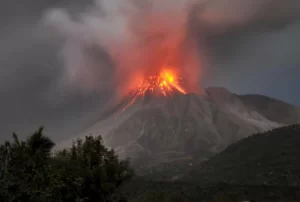
3. Laki, Iceland, 1783 (VEI6)
On the date, 8 June 1783, a 25 km (15.5 mi) long crack of a minimum of 130 vents was not closed with phreatomagmatic eruptions due to the groundwater interacting with the increasing basalt magma.
After some days the explosion became less eruptive, Strombolian, and later Hawaiian in character, with the high discharge of lava effusion. This eruption is marked as 4 on the Volcanic Explosivity Index, but the eight-month emit of sulfuric aerosols takes place in one of the most vital climatic and socially remarkable natural events of the last thousand years.
| Year | 8 June 1783 |
| Death | 9000 |
| Damage Cost | $5 billion |
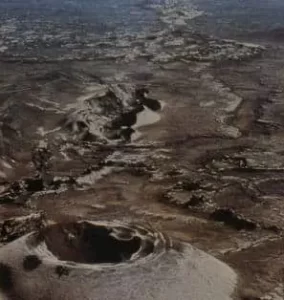
2. Krakatoa, Indonesia, 1883 (VEI 6)
The volcanic explosion of Krakatoa in the Sunda Strait started on the date of 20 May 1883 and got more destructive on the late morning of Monday, 27 August 1883, when more than 70% of the island of Krakatoa and its environment archipelago were destroyed as it made it into a large depression.
The explosion was one of the most dangerous and most damaging volcanic events measured in past. The eruption was felt 3,110 kilometers (1,930 mi) away in Perth, Western Australia, and Rodrigues near Mauritius, 4,800 kilometers (3,000 mi) far.
The sound was felt in 50 various locations around the world and the sound wave is recorded to have traveled the globe seven times. At least 36,417 deaths are related to the explosion and the formed tsunamis.
| Year | 20 May 1883 |
| Death | 36,417 deaths |
| Damage Cost | $1 billion |

1. Mt Tambora, Indonesia, 1815 (VEI 7)
Mount Tambora is a volcano on the island of Sumbawa currently in Indonesia, then the area of the Dutch East Indies, and its 1815 eruption was the most strong volcanic eruption measured in human history.
This Volcanic Explosivity Index (VEI) 7 explosion emitted 160–213 cubic kilometers (38–51 cu mi) of material into the atmosphere and was the latest committed VEI-7 explosion.
Although the Mount Tambora explosion gained a destructive climax on 10 April 1815, raised steaming and the tiny phreatic explosion happened during the next six months to three years. The ash from the explosion column dispersed around the world and decreased global temperatures known as the Year Without a Summer in 1816.
This brief time of remarkable climate switch activated the highest weather and harvest failures in various regions around the world. Many climate forcings met and interacted in a well-ordered manner that has not been watched after any other big volcanic explosion since the initial of the Stone Age.
| Year | April 5, 1815 |
| Death | 100,000 people |
| Damage Cost | $860 million |

| Read Also: Circum Pacific Seismic Belt |
